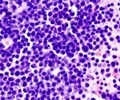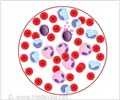Eighty percent of the time childhood acute lymphoblastic leukemia is curable with chemotherapy. The bad news is doctors are not sure why it doesn’t work for the other 20 percent of patients. Now, new research finds it could be because of a small number of genes that are resistant to drugs used to treat the disease.
Researchers tested leukemia cells from 173 children. They looked at the sensitivity of the cells to four different treatment drugs. The cells were then assessed to identify which ones were drug-sensitive and which ones were drug-resistant. The gene-expression patterns were then compared with the original 173 patients and 98 children from another institution.Researchers identified a number of different genes that were resistant to each of the four drugs. They found the patients with more of the resistant genes were less likely to respond to treatment. Researchers say of the 124 genes identified, 121 have not previously been associated with resistance to the four chemotherapy drugs.
Thus researchers conclude saying that a relatively small number of genes can play a role in the resistance to treatment for children with acute lymphoblastic leukemia.










